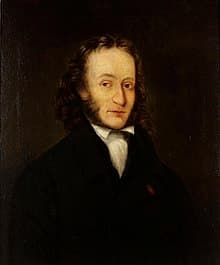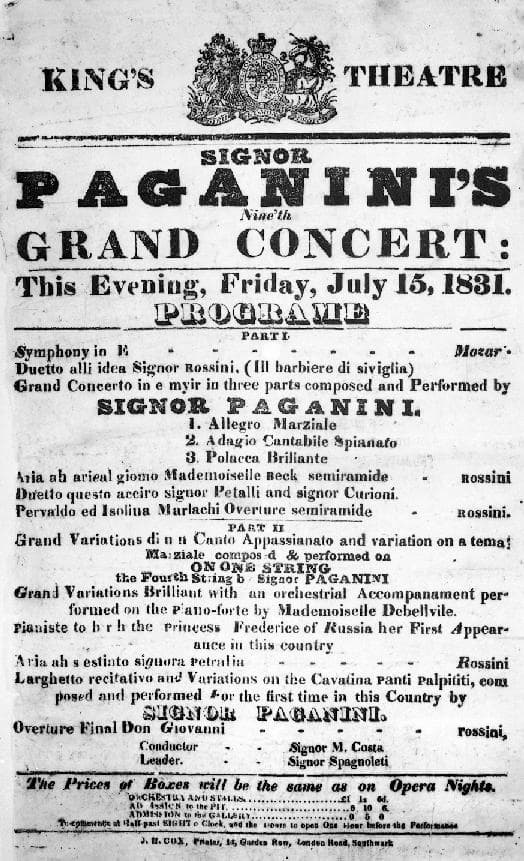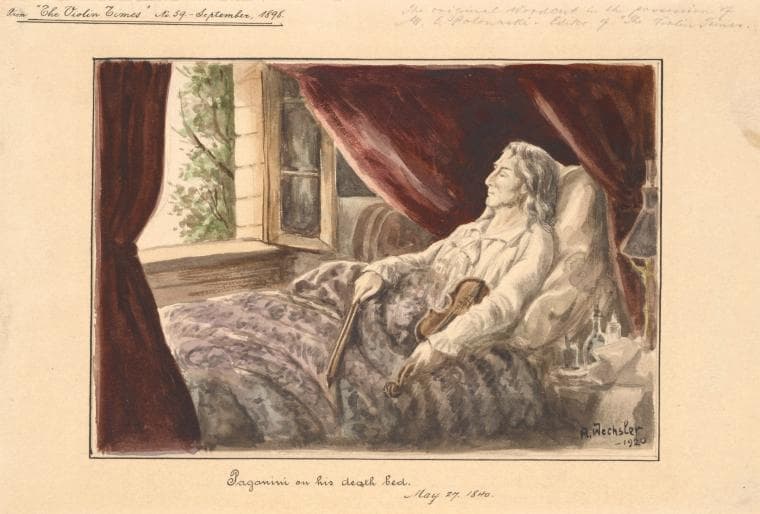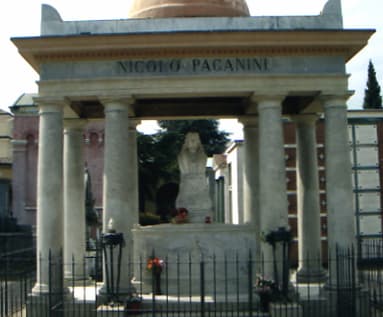Niccolò Paganini had never been a picture of perfect health. His physical appearance—tall and thin with long arms, legs, fingers, and toes, and exceptional flexibility of his joints—recently gave rise to suggestions that he suffered from “Marfan Syndrome.” Although no contemporary medical diagnosis is known to exist, we do know that individuals affected by this illness are cautioned to avoid strenuous exercise. And that is exactly what Paganini did not do during the final years of his life as he pursued an insanely hectic concert schedule.

Niccolò Paganini in 1836
Diagnosed with syphilis as early as 1822, he was prescribed the supposed cures of the day, mercury and opium. A decade later he received treatment for tuberculosis, but after 1834, suffering from the combined effects of his illnesses and medical treatments, he decided to put an end to his concert career. He would still occasionally perform in a number of benefit concerts, but Paganini decided to invest a large chunk of money into a gaming venture in Paris, to be known as “The Casino Paganini.”
Niccolò Paganini: Balletto Campestra, “Variations on a Comic Theme”
As gambling was still frowned upon by the authorities, the official disguise for “The Casino Paganini” was dancing, reading, lectures, and concerts contractually played by Paganini. However, the main activity and moneymaker were still gambling. The whole affair lasted barely two months before police closed the premises due “to infringement of the law”, with the Government having refused to grant a gaming license. A week later, the Casino Company filed for bankruptcy and sued Paganini for breach of contract.

Niccolò Paganini’s 1831 concert programme in London
Additional lawsuits and further litigation quickly followed, and various fines and heavy legal fees drove Paganini towards destitution. In an effort to recoup some of his losses, Paganini auctioned off his personal effects, and a different matter forced him into house arrest for two months. As he wrote, “I delayed my departure from Paris because of a rogue who made a complaint to the King’s procurator that I sought to assassinate him in my house by means of four armed murderers in disguise. At last, the case was dismissed and the rogue was discovered.”
Niccolò Paganini: Terzetto Concertante for viola, cello, and guitar
Paganini was eager to depart from Paris, and after a short stay in Marseilles, he continued on to Nice. Before departing, however, he sent a cheque for 20,000 francs to Hector Berlioz along with a short message, “Beethoven being dead only a Berlioz could reincarnate him. I who have fed on your divine compositions worthy of a genius as yours, feel it my duty to ask you to accept in homage the sum of 20,000 Francs, which Baron Rothschild will remit on presentation of the accompanying note.” Berlioz was delighted and dedicated his next symphonic poem “Romeo and Juliet” to Paganini. With his health rapidly deteriorating, The Times wrote on 16 April 1839. “Paganini is dying. The physician’s despair of being able to prolong the days of that eminent artist, who appears to have lived for some time past by positive enchantment.” Paganini received more bad news on 28 June, as the Paris court fined him a substantial amount of money, with the threat of arrest for a period of ten years if the claims remained unfulfilled. Paganini immediately lodged an appeal.
Niccolò Paganini: La Primavera

Niccolò Paganini on his death bed
Niccolò Paganini: La Primavera (Salvatore Accardo, violin; London Philharmonic Orchestra; Charles Dutoit, cond.)
By July 1839, Paganini had lost all his teeth and was eating with the greatest difficulty. The bad news kept rolling in as on 3 January 1840 his appeal on the Casino lawsuit was rejected, and the damages increased. On 24 May 1840, Paganini’s condition was becoming critical and his son sent for a priest to perform the last rites. Paganini refused the sacrament, and this failure to accept the church’s requirements was immediately reported to the Bishop of Nice.

Tomb of Niccolò Paganini
In the afternoon of 27 May 1840, “Paganini stirred to the sound of the clock on the mantelpiece and tried to raise his head. His eyes turned toward the door, and the 57-year-old Paganini died from internal hemorrhaging.” Because he had refused last rites, and of his widely rumored association with the devil, the Church denied his body a Catholic burial in Genoa, the place of his birth. It took four years and an appeal to the Pope before the body was transported to Genoa. However, the greatest violinist the world had ever known, could still not be laid to rest. He was finally buried in 1876 in a small cemetery in Parma, and finally reinterred in the new cemetery in Parma in 1896.
For more of the best in classical music, sign up to our E-Newsletter
